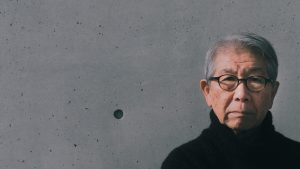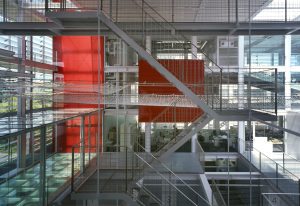Riken Yamamoto has won the 2024 Pritzker Architecture Prize, widely regarded as architecture’s highest honour.
The architect and social advocate is noted for blurring the boundaries between the public and private realms to promote opportunities for interaction and chance encounters, defining community as “a sense of sharing one space”.

The 2024 Jury Citation states, in part, that Yamamoto was selected “for creating awareness in the community in what is the responsibility of social demand, for questioning the discipline of architecture to calibrate each individual architectural response, and above all for reminding us that in architecture, as in democracy, spaces must be created by the resolve of the people.”
In a career spanning five decades, his projects have ranged from private residences to public housing, elementary schools to university buildings, institutions to civic spaces and city planning throughout Japan, China, South Korea and Switzerland.
Transparency is a hallmark of his work, so those inside may experience the environment that lies beyond, while those passing by may feel a sense of belonging.
Enabling a sense of community through architecture
The Hiroshima Nishi Fire Station (Hiroshima, Japan, 2000), appears entirely transparent, with its glass louvered façade and interior glass walls. Visitors and passersby may view through to the central atrium to witness the daily activity and training of firefighters, and are encouraged to grow acquainted with the civil servants who protect them in the many designated public areas of the building.

Saitama Prefectural University (Koshigaya, Japan 1999), specialising in nursing and health sciences, is composed of nine buildings connected by terraces that transition into walkways leading to transparent volumes that allow views from one classroom to another, but also from one building to the next, encouraging interdisciplinary learning. Such fellowship is fostered even within the youngest generations at Koyasu Elementary School (Yokohama, Japan 2018), which features generous, undivided terraces extending learning spaces, permitting sights into and from each classroom, and encouraging relationships among students across grades levels.
He considers the user experience first, designing Yokosuka Museum of Art (Yokosuka, Japan 2006) as both a destination for travellers and a daily reprieve for locals. While the inviting serpentine entrance evokes the surrounding Tokyo Bay and nearby mountains, many of the galleries are underground, providing those who approach with a clear, undisturbed visual experience of the natural geography.
“For me, to recognise space is to recognise an entire community,” Yamamoto said.
“The current architectural approach emphasises privacy, negating the necessity of societal relationships. However, we can still honour the freedom of each individual while living together in architectural space as a republic, fostering harmony across cultures and phases of life.”
Alejandro Aravena, jury chair and 2016 Pritzker Prize laureate, said: “One of the things we need most in the future of cities is to create conditions through architecture that multiply the opportunities for people to come together and interact. By carefully blurring the boundary between public and private, Yamamoto contributes positively beyond the brief to enable community. He is a reassuring architect who brings dignity to everyday life. Normality becomes extraordinary. Calmness leads to splendour.”
Yamamoto, who is the 53rd Pritzker Prize laureate, will be honoured in Chicago, Illinois, in the spring. The 2024 Laureate Lecture will be held at SR Crown Hall at the Illinois Institute of Technology, in partnership with the Chicago Architecture Center, on 16 May, open to the public in-person and online.

